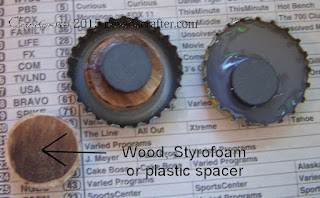Toolbox Giftbasket
for
Him or Her
Enlarge this design to whatever size you need.The length can be adjusted to however long you need. I recommend recessing the dowel handle or even drilling a hole all the way through for the dowel. Then hold in place with screws and or glue. Make sure you use the appropriate length screws and glue for the bottom and sides. Sand the sides of the project so that you can stain the wood afterward, but painting or decorating the box would probably also work.
Once you're finished with the project all you have left to do is to fill it with your favorite goodies for your favorite person and you will have a gift they will not soon forget. I love this project because it is such a versatile gift that can be given to him or her. It leaves them with something to use after they have consumed the goodies inside and could be used as a toolbox or even a planter for the front porch.
Be sure to checkout our web site www.nevadacrafter.com and our other blogs http://craft44.blogspot.com/ and http://nevadacrafter.blogspot.com/
Be sure to checkout our web site www.nevadacrafter.com and our other blogs http://craft44.blogspot.com/ and http://nevadacrafter.blogspot.com/



























